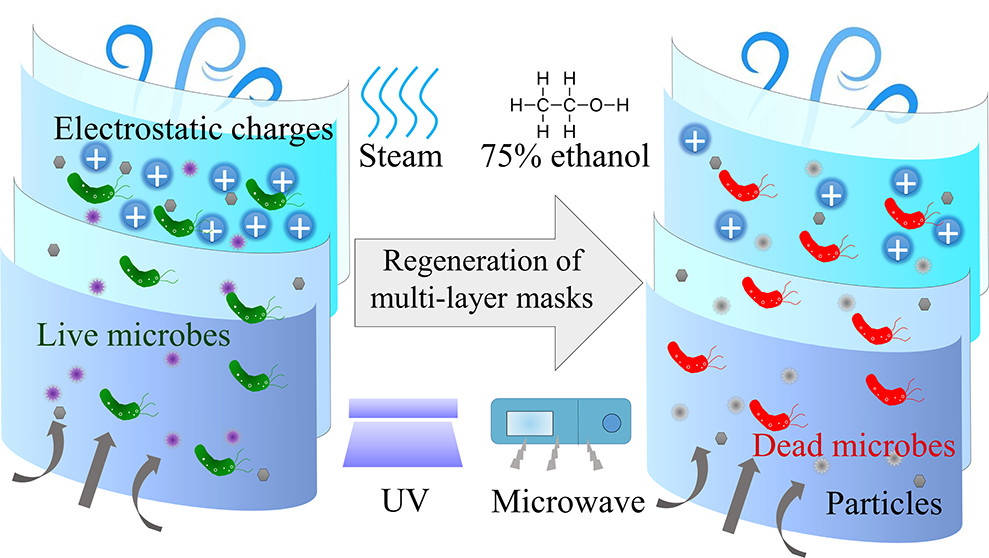Mask Regeneration Processes
Evaluation of Mask Regeneration Processes in Terms of the Bacteria Inactivation Efficiency and Influences on Filtration Performance
The regeneration of masks and filtering facepiece respirators (FFRs) is of critical importance because of the severe shortage of FFRs during large-scale outbreaks of respiratory epidemics, such as COVID-19. Comprehensive experiments regarding FFR regeneration were performed in a recent study (external pageHe, Guo, Gao, Liu, Yue, Wang, ACS Nano, 10.1021/acsnano.0c04782call_made) with model bacteria to illustrate the decontamination performance of the regeneration processes.

The results showed that it is dangerous to use a contaminated FFR without any microbe inactivation treatment because the bacteria can live for more than 8 hours. The filtration efficiency and surface electrostatic potential of 75% ethanol-treated FFRs were significantly reduced, and a most penetrating particle size of 200 nm was observed. Steam and microwave irradiation showed promising decontamination performances, achieving 100% inactivation in 90 min and 30 min, respectively. The filtration efficiencies of steam-treated FFRs for 50 and 100 nm particles decreased from 98.86% and 99.51% to 97.58% and 98.79%, respectively. Ultraviolet irradiation (UVI) effectively inactivated the surface bacteria with a short treatment of 5 min and did not affect the filtration performance. However, the UV dose reaching different layers of the FFP2 mask sample gradually decreased from the outermost layer to the innermost layer, while the model bacteria on the second and third layers could not be killed completely. UVI+MWI and steam were recommended to effectively decontaminate the used respirators and still maintain the respirators’ filtration efficiency. The work provides a comprehensive evaluation for FFR regeneration in terms of the filtration efficiencies for 50−500 nm particles, the electrostatic properties, mechanical properties and decontamination effects.
